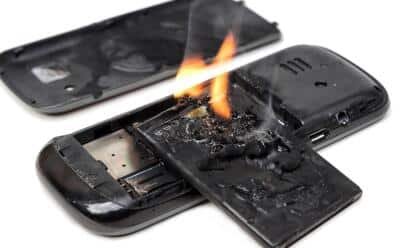How to Choose the Right Battery for Your Device
Now the market is full of lithium battery of various sizes and brands, and many users are trying them out with a trial mentality. However, some users report that the effect of the battery is not satisfactory. Next, We will tell you how to choose the battery correctly, and teach you a few ways to judge the quality of the battery. Selecting the right battery cells for your device can ensure that it operates effectively and safely.
Realize Your Device
Before you purchase a battery for your device, it’s important to understand your device’s battery requirements.
1.CHECK the Device’s Manual
The manual or website for your device should provide information on the recommended or required battery type, size, and capacity for your device. For example, if you’re looking to replace the battery in your cell phone, the manual may indicate that the device requires a lithium-ion battery with a specific voltage and capacity.
2. Device’s POWER
Power consumption is a crucial factor to consider when selecting a battery for your device. Look at the device’s power consumption and calculate how long you want the battery to last. This can help you determine the required capacity of the battery. For example, if you’re using a flashlight for an extended period, you’ll need a battery with a high capacity to ensure it lasts for the duration of your use.
3. Device’s VOLTAGE
Make sure the battery’s voltage output matches the device’s requirements. Using a battery with a different voltage can damage the device or cause it to malfunction. For example, if your device requires a 3.7-volt battery, using a battery with a higher voltage can cause overheating or damage to the device’s circuits.
4.SIZE & WEIGHT LIMITATIONS
Some devices have limited space for a battery or have weight limitations, so it’s important to select a battery that fits within these limitations. For example, if you’re looking for a battery for a drone, you’ll need to consider the weight of the battery, as it can impact the drone’s flight time and stability.
5.COMPARE DIFFERENT BATTEYR TYPES
There are various battery types available, each with their pros and cons. Lithium-ion batteries are commonly used in electronic devices due to their high capacity, low self-discharge rate, and light weight. Alkaline batteries are commonly used in low-power devices such as remote controls and flashlights. NiMH batteries are rechargeable and commonly used in high-power devices such as digital cameras. By comparing the pros and cons of each type, you can select the best battery for your device.
After clearly understanding your device or your design, we need to learn how to judge the quality of lithium batteries.
SAFETY
Some people think that the key indicator of the battery is the service life of the battery, but all indicators need to be based on the premise of safety. If there is no safety guarantee in the application of lithium battery, then for us, it is equivalent to a threat to life.
When purchasing a battery, check whether the lithium battery has a circuit protection board(PCB). The characteristics of the lithium battery determine that it must be equipped with a protection board to avoid overcharging, over discharge, short circuit, etc. of the lithium battery.

If there is no protective plate, the biggest danger of this kind of battery is deformation, explosion and leakage. Although with technology get better and some lithium batteries will not catch fire and make big explosion, some potential problems still exist which will decrease the service time of lithium batteries such as short circuit, over discharge and over charge and so on. In addition, rechargeable lithium battery packs without protective plates are also vulnerable to the influence of the external environment.For example, when the temperature is too high or too low, the performance and life of the battery pack will be affected to varying degrees.The protection board can improve the stability and safety of the battery pack by controlling the charging and discharging process of the battery pack.
According to the current batteries on the market (lead-acid batteries, lithium batteries, LiFePO4 batteries, Li-PO batteries), LiFePO4 batteries maybe are safer and do not deflagrate easily.
CAPACITY
Different capacity, power, and last time will directly lead to a large difference in the price of electric vehicles.
At present, the more common lithium batteries are 12V 20Ah, 24V 30Ah, 48V 40Ah and other different sizes. Not only denpend on common size , but also depends on whether the capacity of the battery is accurately marked. If it is not marked, it is likely to be an inferior battery.
Why?
This kind of battery may be reassembled from inferior batteries or recycled battery cells. Don’t blindly pursue low prices. This kind of battery has a short life and unstable performance. If it is used improperly, it is very likely to damage the equipment. Oh, for example: Catching Fire.
 The battery capacity will gradually decrease as it is used for a longer period of time, and the range of electric vehicles will become shorter and shorter. Therefore, if you want a longer service life, choose one with a larger battery capacity. Of course, you need a little more budget.
The battery capacity will gradually decrease as it is used for a longer period of time, and the range of electric vehicles will become shorter and shorter. Therefore, if you want a longer service life, choose one with a larger battery capacity. Of course, you need a little more budget.
Outlook
The safety hazards of lithium batteries are also related to the internal pressure, structure, process design and other reasons of the battery. When we want to judge the quality of lithium batteries, it mainly depends on the workmanship, size and craftsmanship. For batteries with the same capacity, lithium-ion batteries feel lighter than nickel-metal hydride batteries and nickel-cadmium batteries.
After observising the lithium battery, we can touch then. In general, we need to judge whether the seams of the battery shell are tight or not, and whether there are burrs or oil stains or not. 
From this aspect, it can also be indirectly inferred whether the battery is prone to leakage.
CYCLE LIFE
The cycle life refers to the number of repeated charges and discharges that the battery can experience, and the charge and discharge conditions have a great impact on it. The greater the charging current (the faster the charging speed), the shorter the cycle life; the deeper the discharge depth, the shorter the battery life.According to the newly formulated electric vehicle battery standard, the life of the battery is expressed by the number of charge and discharge cycles of a certain capacity of 70%, and the qualified bottom line is 500 times.

Cycle Life Characteristics Curve of 14250 battery
SELF DISCHARGE
Sometimes people find it strange that the electric car is obviously fully charged. Why is the battery dead after being left there for a period of time without riding?
In fact, this is due to the self-discharge rate of the lithium battery. Normally, when we store our lithium batteries correctly, the stored capacity will drop around 0.5 to 3% per month. If the reduced value exceeds the range, then the battery is not normal.

Examples of applying these considerations:
1. CELL PHONE BATTERY REPLACEMENT![]()
Let’s say you have a Samsung Galaxy S21 that requires a 4000 mAh battery with a voltage of 3.85V. The battery capacity is measured in milliampere-hours (mAh), and it indicates the amount of charge the battery can hold. The voltage specifies the electric potential difference between the positive and negative terminals of the battery.
To calculate the wattage of the battery, you can use the formula: Wattage = Voltage x Current. In this case, the wattage of the battery would be 15.4 watts (3.85V x 4A). This calculation helps you determine how much power the battery can deliver to your device.
2.FLASHLIGHT BATTERY SELECTION:

Let’s say you have a flashlight that requires a battery with a voltage of 3.7V and a capacity of 3000 mAh. The flashlight’s power consumption is 6 watts, and you want the battery to last for at least 4 hours.
To determine the required capacity of the battery, you can use the formula: Capacity (in Ah) = Power (in watts) x Time (in hours) / Voltage (in volts). In this case, the required capacity of the battery would be 0.648 Ah (6W x 4h / 3.7V). You would need a battery with a capacity of at least 648 mAh to power the flashlight for 4 hours.
To calculate the wattage of the battery, you can use the formula: Wattage = Voltage x Current. In this case, the wattage of the battery would be 11.1 watts (3.7V x 3A). This calculation helps you determine how much power the battery can deliver to your device.
3. DRONE BATTERY SELECTION:

Let’s say you have a DJI Mavic Air 2 drone that requires a battery with a voltage of 11.55V and a capacity of 3500 mAh. The drone’s weight is 570 grams, and you want the battery to last for at least 30 minutes.
To determine the required capacity of the battery, you can use the formula: Capacity (in Ah) = Power (in watts) x Time (in hours) / Voltage (in volts). In this case, the required capacity of the battery would be 1.91 Ah (123.75W x 0.5h / 11.55V). You would need a battery with a capacity of at least 1910 mAh to power the drone for 30 minutes.
To calculate the wattage of the battery, you can use the formula: Wattage = Voltage x Current. In this case, the wattage of the battery would be 40.425 watts (11.55V x 3.5A). This calculation helps you determine how much power the battery can deliver to your device.
4.BOAT BATTERY SELECTION:

Let’s say you have a 24-volt trolling motor on your boat that requires two 12-volt batteries. The motor draws a maximum current of 30 amps and you want the batteries to last for at least 6 hours.
To determine the required capacity of each battery, you can use the formula: Capacity (in Ah) = Current (in amps) x Time (in hours). In this case, the required capacity of each battery would be 180 Ah (30A x 6h / 2). You would need two batteries with a capacity of at least 180 Ah each to power the trolling motor for 6 hours.
To determine the required capacity of each battery in watt-hours, you can use the formula: Capacity (in Wh) = Voltage (in V) x Capacity (in Ah). In this case, the required capacity of each battery would be 2,160 Wh (12V x 180 Ah). You would need two batteries with a capacity of at least 2,160 Wh each to power the trolling motor for 6 hours.
To calculate the wattage of each battery, you can use the formula: Wattage = Voltage x Current. In this case, the wattage of each battery would be 360 watts (12V x 30A). This calculation helps you determine how much power the battery can deliver to your device.
5. RC BATTERY SELECTION:
Let’s say you have a high-performance RC car that requires a LiPo (Lithium Polymer) battery with a voltage of 14.8V and a capacity of 5000 mAh. The car draws a maximum current of 60 amps, and you want the battery to provide maximum power output.
To determine the required capacity of the battery, you can use the formula: Capacity (in Ah) = Current (in amps) x Time (in minutes) / 60. In this case, the required capacity of the battery would be 50 Ah (60A x 5 min / 60). You would need a LiPo battery with a capacity of at least 50 Ah to power the RC car.
To calculate the wattage of the battery, you can use the formula: Wattage = Voltage x Current. In this case, the wattage of the battery would be 888 watts (14.8V x 60A). This calculation helps you determine how much power the battery can deliver to your device.
- Identifying the ideal battery type based on device specifications
- Choosing the battery with the right capacity, voltage, size, and weight
- Other considerations, such as brand reputation and cost
In conclusion, When choosing the right battery for your device, it’s important to consider factors like capacity, voltage, size, weight, and cost. By understanding the specifications and performance of these popular battery types, you can make an informed decision and ensure optimal performance for your electronic devices.



Is LiPo good for Solar PV panel Inverter battery off grid Solar power system?
mostly lifepo4 batteries